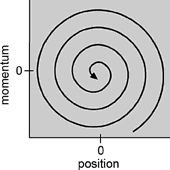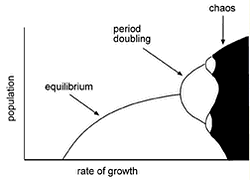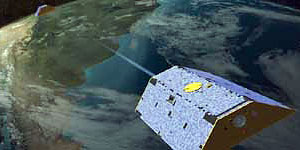Woodstock ( Read it )
The last bedraggled fan sloshed out of Max Yasgur's muddy pasture more than 25 years ago. That's when the debate began about Woodstock's historical significance. True believers still call Woodstock the capstone of an era devoted to human advancement. Cynics say it was a fitting, ridiculous end to an era of naivete. Then there are those who say it was just a hell of a party.
The Woodstock Music and Art Fair in 1969 drew more than 450,000 people to a pasture in Sullivan County. For four days, the site became a countercultural mini-nation in which minds were open, drugs were all but legal and love was "free". The music began Friday afternoon at 5:07pm August 15 and continued until mid-morning Monday August 18. The festival closed the New York State Thruway and created one of the nation's worst traffic jams. It also inspired a slew of local and state laws to ensure that nothing like it would ever happen again.
Woodstock, like only a handful of historical events, has become part of the cultural lexicon. As Watergate is the codeword for a national crisis of confidence and Waterloo stands for ignominious defeat, Woodstock has become an instant adjective denoting youthful hedonism and 60's excess. "What we had here was a once-in-a-lifetime occurrence," said Bethel town historian Bert Feldman. "Dickens said it first: 'It was the best of times. It was the worst of times'. It's an amalgam that will never be reproduced again."
Gathered that weekend in 1969 were liars and lovers, prophets and profiteers. They made love, they made money and they made a little history. Arnold Skolnick, the artist who designed Woodstock's dove-and-guitar symbol, described it this way: "Something was tapped, a nerve, in this country. And everybody just came."
The counterculture's biggest bash - it ultimately cost more than $2.4 million - was sponsored by four very different, and very young, men: John Roberts, Joel Rosenman, Artie Kornfeld and Michael Lang. The oldest of the four was 26. John Roberts supplied the money. He was heir to a drugstore and toothpaste manufacturing fortune. He had a multimillion-dollar trust fund, a University of Pennsylvania degree and a lieutenant's commission in the Army. He had seen exactly one rock concert, by the Beach Boys.
Robert's slightly hipper friend, Joel Rosenman, the son of a prominent Long Island orthodontist, had just graduated from Yale Law School. In 1967, the mustachioed Rosenman, 24, was playing guitar for a lounge band in motels from Long Island to Las Vegas.
Roberts and Rosenman met on a golf course in the fall of 1966. By winter 1967, they shared an apartment and were trying to figure out what they ought to do with the rest of their lives. They had one idea: to create a screwball situation comedy for television, kind of like a male version of "I Love Lucy".
"It was an office comedy about two pals with more money than brains and a thirst for adventure." Rosenman said. "Every week they would get into a different business venture in some nutty scheme. And every week they would be rescued in the nick of time from their fate. "
To get plot ideas for their sitcom, Roberts and Rosenman put a classified ad in the Wall Street Journal and The New York Times in March 1968: "Young Men With Unlimited Capital looking for interesting, legitimate investment opportunities and business propositions. " They got thousands of replies, including one for biodegradable golf balls. Another seemed strange enough to work as a real business venture; Ski-bobs, bicycles on skis that were a fad in Europe. Roberts and Rosenman researched the idea before abandoning it. In the process, the two went from would-be television writers to wanna-be venture capitalists. "Somehow, we became the characters in our own show," Rosenman said.
Artie Kornfield, 25, wore a suit, but the lapels were a little wide and his hair brushed the top of his ears. He was a vice president at Capitol Records. He smoked hash in the office and was the company's connection with the rockers who were starting to sell millions of records. Kornfeld had written maybe 30 hit singles, among them "Dead Man's Curve," recorded by Jan and Dean. He also wrote songs and produced the music for the Cowsills.
Michael Lang didn't wear shoes very often. Friends described him as a cosmic pixie, with a head full of curly black hair that bounced to his shoulders. At 23, he owned what may have been the first head shop inthe state of Flordia. In 1968, Lang had produced one of the biggest rock shows ever, the two-day Miami Pop Festival, which drew 40,000 people. At 24, Lang was the manager of a rock group called Train, which he wanted to sign to a record deal. He bought his proposal to Kornfeld at Capitol Records in late December 1968.
Lang knew Kornfeld had grown up in Bensonhurst, Queens, like he had. Lang got an appointment by telling the record company's receptionist that he was "from the neighborhood." The two hit it off immediately. Not long after they met, Lang moved in with Kornfeld and his wife, Linda. The three had rambling, all-night conversations, fueled by a few joints, in their New York City apartment.
One of their ideas was for a cultural exposition/rock concert/extravaganza. Another was for a recording studio, to be tucked off in the woods more than 100 miles from Manhattan in a town called Woodstock. The location would reflect the back-to-the-land spirit of the counterculture. Besides, the Ulster County town had been an artists' mecca for a century. By the late 1960s, musicians like Bob Dylan, The Band, Tim Hardin, Van Morrison, Jimi Hendrix and Janis Joplin were moving to the area and wanted a state-of-the-art studio.
Lang and Kornfeld were searching for seed money for the festival and money to build the recording studio. They never saw the "young men with unlimited capital" ad, but their lawyer recommended they talk to Roberts and Rosenman. The four met in February 1969. "We met with them in their apartment on 83rd Street in a high-rise," Lang recalls. "They were kind of preppy. Today, I guess they'd be yuppies. They were wearing suits. Artie did most of the talking, because I think they seemed puzzled by me. They were curious about the counterculture, and they were somewhat interested in the project. They wanted a written proposal, which we had but we didn't bring with us. We told them that we would meet again with a budget for the festival.
To this day, the founders of Woodstock disagree on who came up with the original idea for the concert. And, dulled by time, competition and countess retelling, no one recollection is consistent. Lang and Kornfeld say Woodstock was always planned as the largest music festival ever held. At the second meeting, Lang recalls discussing a budget of $500,000 and attendance of 100,000. Lang said he had started looking at festival sites in the fall of 1968, which would have been well before he'd hooked up with Kornfeld or Roberts and Rosenman. But Rosenman and Roberts maintain that they were the driving force behind the festival. As Rosenman and Roberts recall it, Kornfeld and Lang primarily wanted a studio, hyped by a party for rock'n'roll critics and record company executives. "We would have cocktails and canapes in a tent or something," Rosenman said. "We'd send limos down to New York to pick everyone up. Tim Hardin or someone could sing. Maybe, if we were lucky, Joan Baez would get up and do a couple of songs."
At some point, Rosenman and Roberts focused on the party idea and decided that it really ought to be a rock concert. "We made a deal," Rosenman said. "We'd have the party, and the profits from the party would be used to pay for the recording studio. Ultimately, we had the money, so what we said went."
By the end of their third meeting, the little party up in Woodstock had snowballed into a bucolic concert for 50,000 people, the world's biggest rock'n'roll show. The four partners formed a corporation in March. Each held 25 percent. The company was called Woodstock Ventures, Inc., after the hip little Ulster County town where Dylan lived.
The Woodstock Ventures team scurried to find a site. Real estate agents across the mid-Hudson were scouring the countryside for land to rent for just a few months. Feelers went out in Rockland County, then in Orange. For $10,000, Woodstock Ventures had leased a tract of land in the Town of Wallkill owned by Howard Mills, Jr. "It was a Sunday in late March," Rosenman said. "We drove up to Wallkill and saw the industrial park. We talked to Howard Mills and we made a deal." "The vibes weren't right there. It was an industrial park," Roberts interjected. "I just said, 'We gotta have a site now.'"
The 300-acre Mills Industrial Park offered perfect access. It was less than a mile from Route 17, which hooked into the New York State Thruway, and it was right off Route 211, a major local thoroughfare. It has the essentials, electricity and water lines.
The land was zoned for industry; among the permitted uses were cultural exhibitions and concerts. The promoters approached the town planning board and were given a verbal go-ahead because of the zoning. Nonetheless, Lang was unhappy with the site. It was missing the back-to-the-land ambience Woodstock Ventures was selling. "I hated Wallkill," Lang said. Ventures set to work on the Mills property, all the while searching for an alternative.
Rosenman told Wallkill officials in late March or early April that the concert would feature Jazz bands and folk singers. He also said that 50,000 people would attend if they were lucky. Town Supervisor Jack Schlosser throught something was fishy. "More than anything else, I really feel they were deliberately misleading the town," Schlosser said. "The point is, they were less than truthful about the numbers. I became more and more aware, as discussions with them progressed, they did not really know what they were doing. I was in the Army when divisions were 40,000 or 50,000 men," he said. "Christ almighty, the logistics involved in moving men around... I said at one point, 'I don't care if was a convention of 50,000 ministers," I would have felt the same way."
In the cultural-political atmosphere of 1969, promoters Kornfeld and Lang knew it was important to pitch Woodstock in a way that would appeal to their peer's sense of independence. Lang wanted to call the festival an "Aquarian Exposition," capitalizing on the zodiacal reference from the musical "Hair". He had an ornate poster designed, featuring the water-bearer.
By early April, the promoters were carefully cultivating the Woodstock image in the underground press, in publications like the Village Voice and Rolling Stone magazine. Ads began to run in The New York Times and The Times Herald-Record in May. For Kornfeld, Woodstock wasn't a matter of building stages, signing acts or even selling tickets. For him, the festival was always a state of mind, a happening that would exemplify the generation. The event's publicity shrewdly appropriated the counterculture's symbols and catch phrases. "The cool PR image was intentional, "he said.
The group settled on the concrete slogan of "Three Days of Peace and Music" and downplayed the highly conceptual theme of Aquarius. The promoters figured "peace" would link the anti-war sentiment to the rock concert. They also wanted to avoid any violence and figured that a slogan with "peace" in it would help keep order.
The Woodstock dove is really a catbird; originally, it perched on a flute. "I was staying on Shelter Island off Long Island, and I was drawing catbirds all the time," said artist Arnold Skolnick. "As soon as Ira Arnold (a copywriter on the project) called with the copy-approved 'Three Days of Peace and Music,' I just took the razor blade and cut that catbird out of the sketchpad I was using. "First, it sat on a flute. I was listening to jazz at the time, and I guess that's why. But anyway, it sat on a flute for a day, and I finally ended up putting it on a guitar."
Melanie Safka had a song on the radio called "Beautiful People. "An extremely hip DJ named Roscoe on WNEW-FM played it. One day, Melanie ran into a curly-haired music-business guy named Michael Lang, who was talking about a festival he was producing. When Melanie asked if she could play there, Lang's answer was a very laid-back, "Sure." "I thought it would be very low key," recalled Melanie.
Woodstock Ventures was trying to book the biggest rock'n'roll bands in America, but the rockers were reluctant to sign with an untested outfit that might be unable to deliver. "To get the contracts, we had to have the credibility, and to get the credibility, we had to have the contracts, "Rosenman said. Ventures solved the problem by promising paychecks unheard of in 1969. The big breakthrough came with the signing of the top psychedelic band of the day, The Jefferson Airplane, for the incredible sum of $12,000. The Airplane usually took gigs for $5,000 to $6,000. Creedence Clearwater Revival signed for $11,500. The Who then came in for $12,500. The rest of the acts started to fall in line. In all, Ventures spent $180,000 on talent. "I made a decision that we needed three major acts, and I told them I didn't care what it cost," Lang said. "If they had been asking $5,000, I'd say, 'Pay 'em $10,000.' So we paid the deposits, signed the contracts, and that was it: instant credibility."In the spring of 1969, John Sebastian's career was on hold. From 1965 to 1967, Sebastian's band, the Lovin' Spoonful, had cranked out hit after hit - "Do You Believe in Magic," "You Didn't Have To Be So Nice," "Did You Ever Have To Make Up Your Mind," "(What a Day For a) Daydream" and "Summer In The City." But in 1967, after the Lovin' Spoonful appeared on "The Ed Sullivan Show", things began to go wrong. Two band members were busted for pot possession and left the group. Their replacements never quite fit in. In 1968, the group broke up, and Sebastian tried going solo. But his performing career wasn't taking off. So, in the spring of 1969, Sebastian headed west to do a little soul searching. He ended up at a California commune where the hippies made money by making brightly colored shirts and jackets by a process they called tie-dye.
The residents of Wallkill had heard of hippies, drugs and rock concerts, and after the Woodstock advertising hit The New York Times, The Times Herald-Record and the radio stations, local residents knew that a three-day rock show, maybe the biggest ever, was coming. Besides, Woodstock Venture's employees sure looked like hippies. In the minds of many people, long hair and shabby clothes were associated with left-wing politics and drug use. The new ideas about re-ordering society were threatening to many people. In Wallkill, those feelings were unleashed upon Mills and his family. Residents would stop Mills at church to complain. Ventures tried to head off some of the complaints by hiring Wes Pomeroy, a former top assistant at the Justice Department, to head the security detail. A minister, the Rev. Donald Ganoung, was put on the payroll to head up local relations.
Allan Markoff watched the two freaks walk into his store in late April or early May. They were Lang and his buddy, Stan Goldstein. Goldstein, 35, had been one of the organizers of the 1968 Miami Pop Festival. For Woodstock, he was coordinator of campgrounds. "They wanted me to design a sound system for 50,000 or so people," said Markoff, who owned the only stereo store in Middletown, the Audio Center on North Street. "They said there could even be 100,000, might even go to 150,000."
He thought Lang and Goldstein were nuts. "There had never been a concert with 50,000; that was unbelievable," Markoff said. "Now, 100,000, that was impossible. It's tantamount to doing a sound system for 30 million people today." Markoff, then 24, was the only local resident listed in the Audio Engineering Society Magazine. Lang and Goldstein had picked his name out of the magazine; suddenly, Markoff was responsible for gathering sound gear for the greatest show on earth. He remembers one characteristic of the sound system. At the amplifier's lowest setting, the Woodstock speakers would cause pain for anyone standing within 10 feet.
Markoff had doubts about the sanity of the venture until he saw the promoters' office in a barn on the Mills' land. "That's when I saw all these people on these phones, with a switchboard," Markoff said. "When I saw that, I said, 'Hey, this could really happen.'"
Rosenman and Roberts couldn't entice any of the big movie studios into filming their weekend upstate. So they got Michael Wadleigh. Before Woodstock, rock documentation meant obscurity and few profits. A year before Woodstock, Monterey Pop had fizzled at the box office, making movie execs skittish over the idea of funding another rock film. During the summer of Woodstock, Wadleigh, 27, was gaining a reputation as a solid cameraman and director of independent films. Two years earlier, he had dropped out of Columbia University of Physicians and Surgeons, where he was studying to be a neurologist. Since then, he'd spent his time filming on the urban streets, the main battlefield for the cultural skirmishes of the 1960s. He'd filmed Martin Luther King Jr. He'd filmed Bobby Kennedy and George McGovern talking to middle Americans on the campaign trail in '68.
Wadleigh was experimenting with using rock'n'roll in his films as an adjunct to the day's social and political themes. He was also working with multiple images to make documentaries more entertaining than those featuring a bunch of talking heads. And then the Woodstock boys came to his door. Their idea was irresistable. The money was not. Wadleigh went for it anyway.
Goldstein went alone to his first town board meeting in Wallkill. "This was before we knew we had problems," he said. "It was probably in June. We had a full house. No more than 150 people. There were some accusations. Someone made some references to the Chicago convention. That it was young people, and this is the way the youth reacted, and that's what we could expect in our community. (Wallkill Supervisor Jack) Schlosser said that Mayor Daley knew how to handle that. Then I lost my temper. I said there was no need for the violence and that (the police) reaction caused the violence. I said that Daley ran one of the most corrupt political machines in history."
Schlosser, who attended the Chicago convention, didn't recall such a specific exchange about Daley. He did remember the convention, however "I saw these people throw golf clubs with nails in them," he said of the Chicago protesters. "I saw them throw excretion. The police, while I was there at least, showed remarkable restraint."
As the town meetings and the weeks wore on, the confrontation between Ventures and the residents of Wallkill got worse. Woodstock's landlord, Howard Mills, was getting anonymous phone calls. The police were called, but the culprits never were identified, much less caught. "They threatened to blow up his house," Goldstein said. "There were red faces and tempers flaring. People driven by fear to very strange things. They raise their voices and say stupid things they would never ordinarily say. "To this day, Howard Mills will not discuss how his neighbors turned against him in 1969. "I know that it is a part of history, but I don't want to bother about it," Mills said.


















